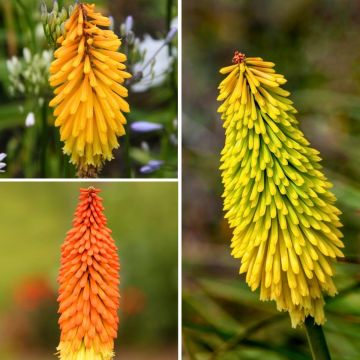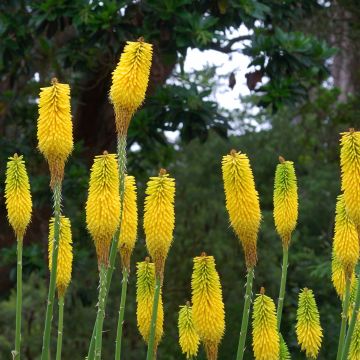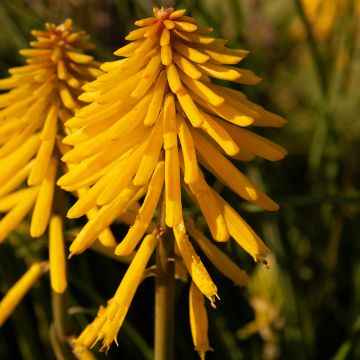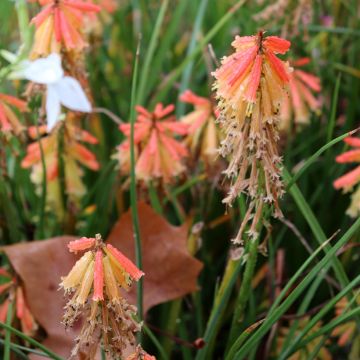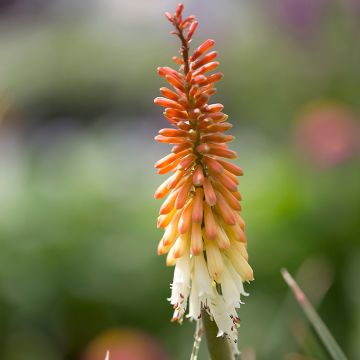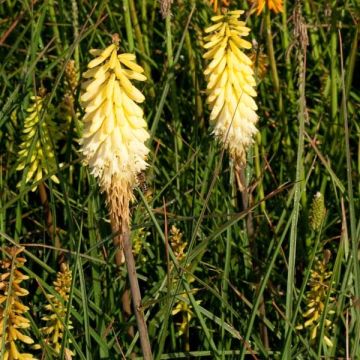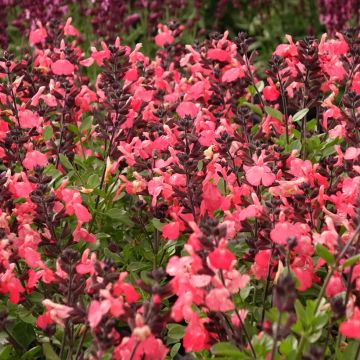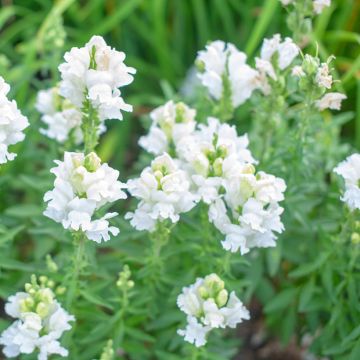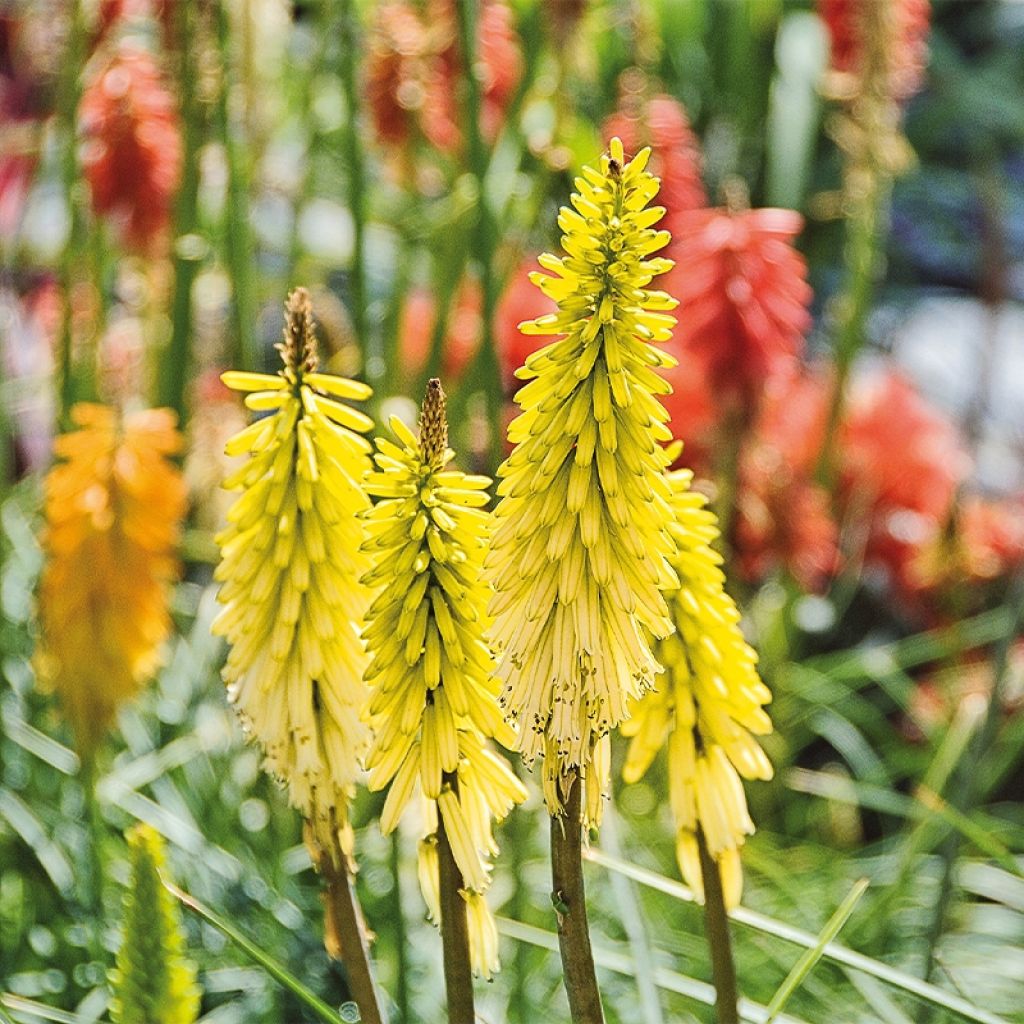

Tritoma - Kniphofia Lemon Popsicle ®
Kniphofia uvaria Lemon Popsicle - Red Hot Poker
Kniphofia x uvaria Lemon Popsicle ®
Red Hot Poker, Tritoma, Torch Lily, Poker Plant
Special offer!
Receive a €20 voucher for any order over €90 (excluding delivery costs, credit notes, and plastic-free options)!
1- Add your favorite plants to your cart.
2- Once you have reached €90, confirm your order (you can even choose the delivery date!).
3- As soon as your order is shipped, you will receive an email containing your voucher code, valid for 3 months (90 days).
Your voucher is unique and can only be used once, for any order with a minimum value of €20, excluding delivery costs.
Can be combined with other current offers, non-divisible and non-refundable.
Home or relay delivery (depending on size and destination)
Schedule delivery date,
and select date in basket
This plant carries a 12 months recovery warranty
More information
We guarantee the quality of our plants for a full growing cycle, and will replace at our expense any plant that fails to recover under normal climatic and planting conditions.
Would this plant suit my garden?
Set up your Plantfit profile →
Description
Kniphofia 'Lemon Popsicle' is one of the latest additions to a series of small-sized Red Hot Pokers, known for their generous and perennial flowering. This excellent variety blooms throughout the summer, in successive waves, in a very bright lemon yellow and acid green colour. It forms a compact and low clump of very fine, grassy, shiny foliage that remains attractive throughout the season. Its numerous inflorescences, carried on long stems, emerge as dense clusters of small pendulous bell-shaped flowers, attracting butterflies and bees. It is a robust and cheerful perennial, low in water consumption, to be placed in full sun, in well-drained soil.
Kniphofia 'Lemon Popsicle' belongs to the family of Asphodelaceae. This low variety is a recently obtained hybrid resulting from the cross-breeding of various species native to Southern and Eastern Africa, including Kniphofia uvaria. It is a deciduous perennial with fleshy rhizomes, with aerial vegetation drying out in winter and reappearing in spring. It forms an upright, slightly tousled clump with tough, long, and very thin leaves, slightly sharp, reaching 45 cm (18in) in height and 50-60 cm (20-24in) in width. The flowering period is particularly long, occurring from May-June to September, reaching a height of 60-70 cm (24-28in), well above the foliage, on bare stems. The flowers, rich in nectar and honey, are dense terminal clusters measuring 14 cm (6in) in height and 6 cm (2in) in width. It consists of tubular and pendulous flowers, starting out in an acid green colour and quickly evolving to a bright and light yellow, from top to bottom of the spike. The foliage forms a beautiful, spreading bunch, decorative even outside of the flowering period.
Their exotic appearance already charmed our grandmothers. The new Kniphofias, with their numerous vividly coloured flowers, are even more decorative. They are surprising plants, yet very sturdy, perfect candidates for cottage gardens or wildflower beds where they light up with coloured torches. Kniphofia 'Lemon Popsicle' will fit well in a large rockery, paired with magenta red or white hollyhocks, blue, white or purple salvias, or Anchusa azurea 'Loddon Royalist' with deep blue flowers, for example. We have designed a small contrasting scene that is easy to reproduce with Penstemon Husker Red, 'Anthemis tinctoria Sauce Hollandaise', and Nepeta Purrsian Blue. Tritomas can also be planted individually on a lawn, along a pathway by mixing the colours, or combined with small agapanthus, grasses, or dwarf cannas to create an exotic look.
Report an error about the product description
Kniphofia uvaria Lemon Popsicle - Red Hot Poker in pictures
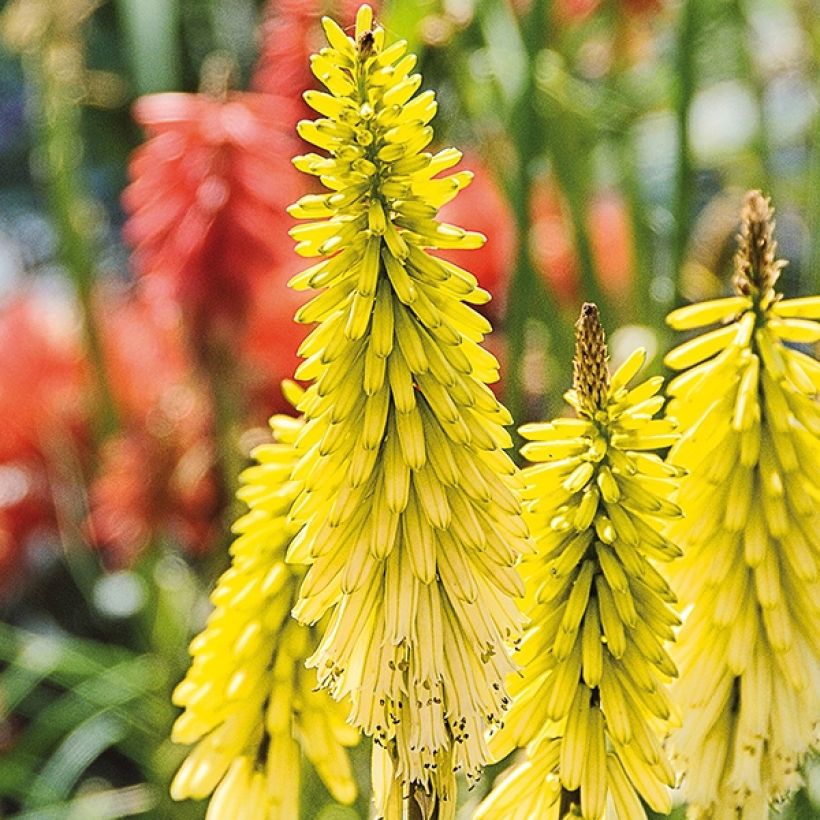

Flowering
Foliage
Plant habit
Botanical data
Kniphofia
x uvaria
Lemon Popsicle ®
Asphodelaceae
Red Hot Poker, Tritoma, Torch Lily, Poker Plant
Cultivar or hybrid
Other Kniphofia - Red-Hot Pokers
View all →Planting and care
Plant Kniphofia 'Lemon Popsicle' in ordinary, but well-drained, loose, and fertilized soil, in full sun. It particularly thrives in slightly loamy soils and dislikes heavy, waterlogged soils in winter. Make sure it doesn't lack water in summer, as that's when it needs it the most to support its flowering. In dry climates, the plant will flower earlier (as early as May), but will be dormant in summer. To prevent a particularly cold winter, you can apply a thick mulch around the stump. This plant tolerates wind and the specific conditions of coastal areas. Apply organic fertiliser at the start of the growing season. Remove withered stems and flowers at the end of autumn. This plant requires no other care.
Planting period
Intended location
Care
This item has not been reviewed yet - be the first to leave a review about it.
Similar products
Haven't found what you were looking for?
Hardiness is the lowest winter temperature a plant can endure without suffering serious damage or even dying. However, hardiness is affected by location (a sheltered area, such as a patio), protection (winter cover) and soil type (hardiness is improved by well-drained soil).

Photo Sharing Terms & Conditions
In order to encourage gardeners to interact and share their experiences, Promesse de fleurs offers various media enabling content to be uploaded onto its Site - in particular via the ‘Photo sharing’ module.
The User agrees to refrain from:
- Posting any content that is illegal, prejudicial, insulting, racist, inciteful to hatred, revisionist, contrary to public decency, that infringes on privacy or on the privacy rights of third parties, in particular the publicity rights of persons and goods, intellectual property rights, or the right to privacy.
- Submitting content on behalf of a third party;
- Impersonate the identity of a third party and/or publish any personal information about a third party;
In general, the User undertakes to refrain from any unethical behaviour.
All Content (in particular text, comments, files, images, photos, videos, creative works, etc.), which may be subject to property or intellectual property rights, image or other private rights, shall remain the property of the User, subject to the limited rights granted by the terms of the licence granted by Promesse de fleurs as stated below. Users are at liberty to publish or not to publish such Content on the Site, notably via the ‘Photo Sharing’ facility, and accept that this Content shall be made public and freely accessible, notably on the Internet.
Users further acknowledge, undertake to have ,and guarantee that they hold all necessary rights and permissions to publish such material on the Site, in particular with regard to the legislation in force pertaining to any privacy, property, intellectual property, image, or contractual rights, or rights of any other nature. By publishing such Content on the Site, Users acknowledge accepting full liability as publishers of the Content within the meaning of the law, and grant Promesse de fleurs, free of charge, an inclusive, worldwide licence for the said Content for the entire duration of its publication, including all reproduction, representation, up/downloading, displaying, performing, transmission, and storage rights.
Users also grant permission for their name to be linked to the Content and accept that this link may not always be made available.
By engaging in posting material, Users consent to their Content becoming automatically accessible on the Internet, in particular on other sites and/or blogs and/or web pages of the Promesse de fleurs site, including in particular social pages and the Promesse de fleurs catalogue.
Users may secure the removal of entrusted content free of charge by issuing a simple request via our contact form.
The flowering period indicated on our website applies to countries and regions located in USDA zone 8 (France, the United Kingdom, Ireland, the Netherlands, etc.)
It will vary according to where you live:
- In zones 9 to 10 (Italy, Spain, Greece, etc.), flowering will occur about 2 to 4 weeks earlier.
- In zones 6 to 7 (Germany, Poland, Slovenia, and lower mountainous regions), flowering will be delayed by 2 to 3 weeks.
- In zone 5 (Central Europe, Scandinavia), blooming will be delayed by 3 to 5 weeks.
In temperate climates, pruning of spring-flowering shrubs (forsythia, spireas, etc.) should be done just after flowering.
Pruning of summer-flowering shrubs (Indian Lilac, Perovskia, etc.) can be done in winter or spring.
In cold regions as well as with frost-sensitive plants, avoid pruning too early when severe frosts may still occur.
The planting period indicated on our website applies to countries and regions located in USDA zone 8 (France, United Kingdom, Ireland, Netherlands).
It will vary according to where you live:
- In Mediterranean zones (Marseille, Madrid, Milan, etc.), autumn and winter are the best planting periods.
- In continental zones (Strasbourg, Munich, Vienna, etc.), delay planting by 2 to 3 weeks in spring and bring it forward by 2 to 4 weeks in autumn.
- In mountainous regions (the Alps, Pyrenees, Carpathians, etc.), it is best to plant in late spring (May-June) or late summer (August-September).
The harvesting period indicated on our website applies to countries and regions in USDA zone 8 (France, England, Ireland, the Netherlands).
In colder areas (Scandinavia, Poland, Austria...) fruit and vegetable harvests are likely to be delayed by 3-4 weeks.
In warmer areas (Italy, Spain, Greece, etc.), harvesting will probably take place earlier, depending on weather conditions.
The sowing periods indicated on our website apply to countries and regions within USDA Zone 8 (France, UK, Ireland, Netherlands).
In colder areas (Scandinavia, Poland, Austria...), delay any outdoor sowing by 3-4 weeks, or sow under glass.
In warmer climes (Italy, Spain, Greece, etc.), bring outdoor sowing forward by a few weeks.






























